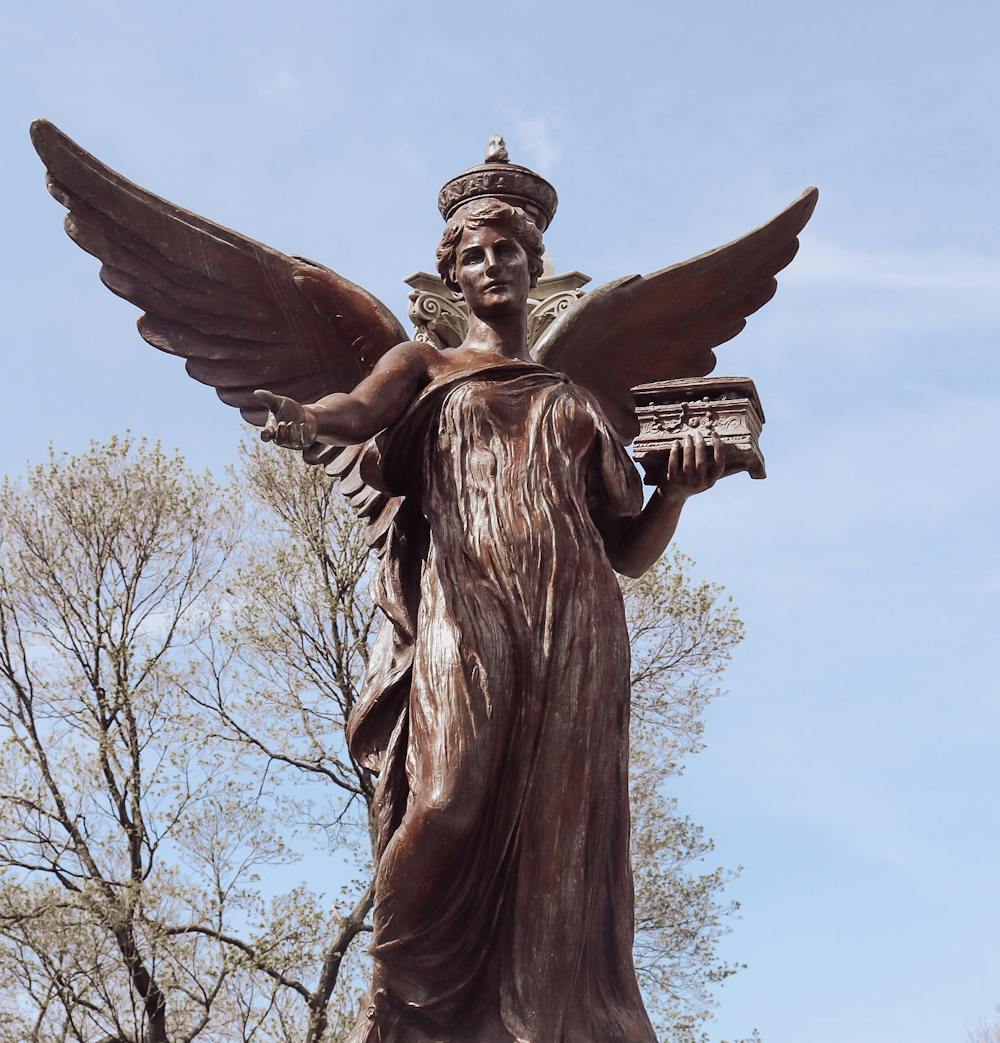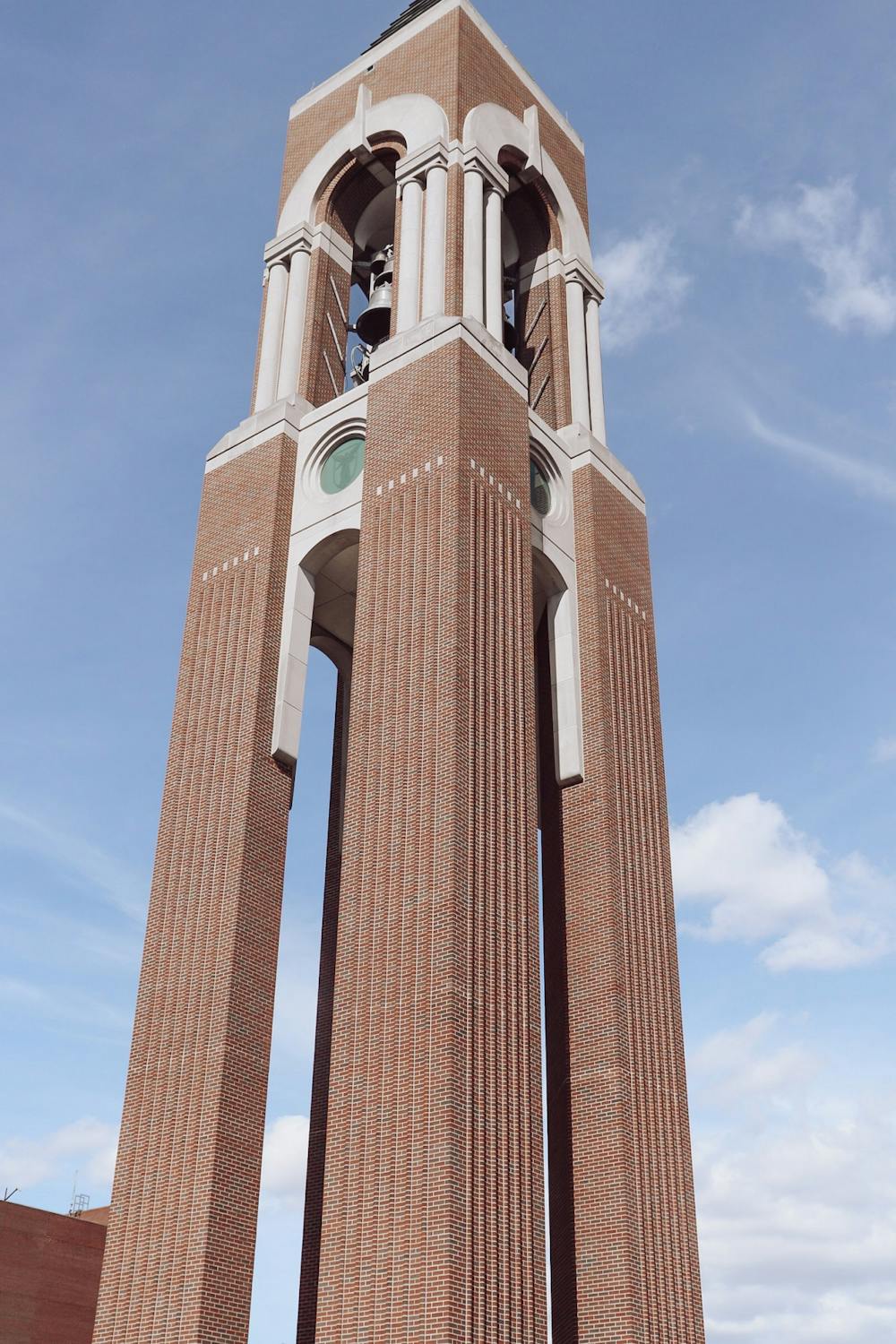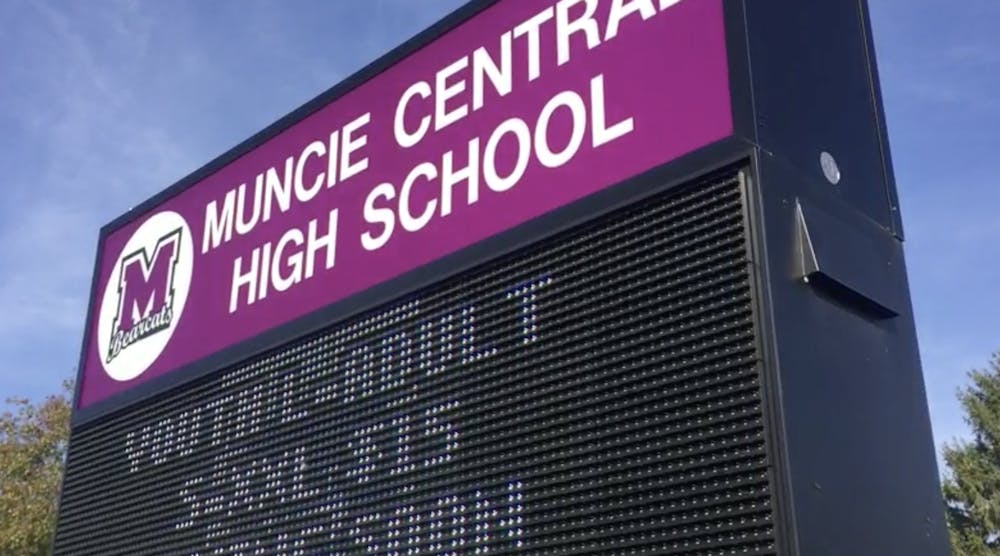Two years ago, Muncie Community Schools was on the brink of financial collapse. In 2018, Muncie Community Schools received a D grade from the Indiana Department of Education. and was placed under an emergency order from the state when Ball State University and a handful of legislators crafted a controversial plan to step in, setting the stage for a new kind of public school system.
The relationship between Ball State and Muncie Community Schools is just beginning. It is a process that is constantly evolving and changing. A divide among universities and the towns they call home is not unique to Muncie. It is a division that exists everywhere in the United States, a division that has been described as “Town and Gown.” Muncie’s town and gown divide is one unlike any other and it could be the start of more colleges taking initiative within their communities. It is different from other communities because Muncie is one of the few communities that has been given the opportunity by Ball State to help take over their failing school system. The city and Ball State have a rare opportunity that many schools and towns are not offered.

In 2017 Muncie Community Schools was placed under the control of the state of Indiana. The state designated the school a distressed political subdivision. Muncie Community Schools joined this designation along with the Gary Community School System as the only school systems to have been placed in this designation.
There were extensive issues with funding and enrollment. In 1984, there were a little over 11,000 students enrolled in Muncie Community Schools. Since then, the enrollment numbers have dropped 53 percent since 1984. In 2019 the district was approximately $12 million in debt with only 5,500 students in the district. Every year except 2009, the Muncie school system used more than the annual budget. Only two school systems in Indiana received worse grades than Muncie Community Schools in 2018. School ratings were far from the only problem. In a town of 61,000 people where the poverty rate is higher than the national average, kids slipped through the cracks and the schools were gradually decreasing in the amount of money they had to fund the school system. As the decline continued, Muncie Community Schools needed help to get back on its feet.
Andrew Dale, a former mayoral candidate in Muncie and a Ball State graduate, has worked for years in Muncie with community affairs and development said that the Muncie School system got to the point that an emergency manager needed to be appointed. This manager was tasked with taking over all fiscal and executive matters regarding the corporation within the local government. These ongoing problems were threatening to cause the collapse of the school district. The problems were unprecedented. The state had never encountered something like this. The solution to this problem was equally unprecedented. In this case the local community looked to a proposal that would see Ball State University assume control of the school system. Ball State would use its local resources, organizations, and its involvement in the community to pick up the Muncie Community Schools and get it back to stability. If the plan succeeds, it will contribute to not only the betterment of the students attending Muncie Community Schools but the whole city.
“I believe we’re witnessing the full measure of what BSU’s servant-leadership model can produce,” Dale said. “I have hope for our educational future and I believe that Muncie has the potential to become the lifelong learning capital of the Midwest. Where else better to plant the stake in the ground for such an effort than in the classrooms of our public school system?”
Ball State finds itself in a town of industry long forgotten. It is also in the unique position of being the largest employer in the city. The university stands as an ambassador for the city, so when the school system was starting to fall upon hard times, Ball State took it upon itself to help the city and Muncie Community Schools.
“It began in 2017 with an emergency manager appointed by the state,” Ball State University President Geoffrey Mearns said. “Which led to the general assembly and the governor asking the university to consider participating in the future of Muncie Community Schools.”
In May of 2018, House Bill 1315 introduced the legislation that would lead to the takeover by Ball State. In July of 2018, the Ball State Board of Trustees voted to officially approve a resolution allowing the university to appoint a new school board. The official partnership began in July 2018.
When Ball State took over Muncie Schools, it appointed a seven-member panel that presided as the overall governing board for the school system. Most members were appointed by the Ball State Board of Trustees. Some came recommended by President Mearns, himself. Two were appointed by Mearns, one was selected from the previous Mayor Dennis Tyler’s recommendation, and one was chosen by a recommendation by the city council. The seven council members include; James Williams, Brittany Bales, Jim Lowe, Dave Heeter, Keith O'Neal, Mark Ervin, and WaTasha Barnes Griffin. The president of the board is James Williams.
This collection of people includes a lawyer, an expert in special needs children, a leader in a women’s voting league and others.
“The reality is for us, and perhaps for any college town is that the future of the city is dependent upon the future of the institution,” Mearns said. “The future of the institution is dependent upon the vitality of the future of the community. It was my sense that if our futures are interrelated and interdependent it would make sense for us to work together to strengthen each other by way of a partnership.”
Much of the work on this project was done behind closed doors and the initial announcement came as a surprise to many in the Muncie community including local officials, according to Rep. Sue Errington.
“My reaction was a mixture of shock and outrage at the secrecy surrounding the planning of this unprecedented takeover in the heart of my legislative district,” Errington said. “As far as I can tell, all of the decision making was done behind closed doors between House Republican leadership and Ball State leadership and probably in consultation with officials of the Distressed Units Appeals Board.”
Though the initial planning of the takeover was largely done out of public view, upon the announcement being made steps were taken to help build trust and raise funding within the community.
“It has had a positive effect in the community,” Errington said. “It has changed the conversation from one of despair, panic, anger and finger-pointing to one of hope that the new leadership will be successful in turning the ship around. Teachers, administrators, and families are no longer leaving in droves. Civic leaders and citizens are involved in a variety of community conversations and events to solicit ideas and feedback which increases investment in a successful outcome. There is now a sense that town and gown working together can make MCS successful.”

According to the Muncie Community Schools Fiscal Plan, Muncie schools began the 2015-16 school year with less than $70,000 in funds. In the ensuing years, total funding has been increasing. After Ball State took over, the school system was projected to have over $9 million in total funds going into the 2019-2020 school year, according to the Fiscal Plan. The university was able to secure additional funding through outside donations from local groups within the community to help Muncie Schools during their transition period. The average number of monetary donations that the community has provided is currently at $3.15 million, according to the Fiscal Plan. The Ball Brothers Foundation and George and Frances Ball Foundation have contributed $1 million each to the schools. Muncie Community Schools has benefited from over $300 million in philanthropic investments, including the intervention of Ball State as shown in the Fiscal Plan.
“Since the partnership started, short term funding has poured in from local foundations, banks and other revenue streams,” said Jason Donatti, a former school board member. “However, to address and achieve long term financial stability it will require an enrollment increase because the state funding formula that provides for funds for school operation is based on enrollment.”
Enrollment has seen a slight increase in the first full year of the takeover. Muncie’s enrollment went up and is now sitting at 5,690 students in all 14 public schools including the elementary schools, middle schools, high school, and the Youth Opportunity Center.
New Muncie Community Schools Chief Executive Officer Lee Ann Kwiatkowski, who was appointed in summer 2019, has proposed a new cradle to career program that would help students interact, learn from, and train with professionals in given fields. This program is hoped to help increase both enrollment and graduation rates in the school system. The results of this program will start to be seen once the first school year has been completed.
“The first way that we can measure success is the budget is now balanced,” Mearns said. “I think that was a very important step. The enrollment decline has also stabilized. I think another way in which we can assess success is the quality of people including doctor Kwiatkowski. The fact that we have been able to attract outstanding people to serve on the school board and that we’ve been able to attract outstanding leadership is a good measure of success.”
Ball State also appointed a new board, Joint BSU-MCS Academic Innovation Council, whose job is to submit the new academic and financial plans due by law in June 2020, and to show the progress the year after. President Mearns and his administrators introduced a new strategic plan called Destination 2040. This plan is intended to strengthen the relationship between the partnership with the school system, but the community as well.
“Ball State University, in my experience, has always been walking fast to meet in the middle and to be accepted as not only a community partner and resource but a trusted neighbor,” Dale said. “I think the better question is if the community will fully embrace Ball State.”
There are not many other examples of this kind of partnership within the United States. The only example is in Chelsea, Massachusetts where Boston University took over primary schools in the area. There are many differences, however. Ball State is the first public university to actively seek this kind of role in reconstructing a school system that seemed on the brink of failure. While the agreement is new, and the results have just begun to show as the partnership is still very new. The parents in the district have seen a difference in the morale in the schools.
“I think it is going well, there is a marked change in the overall morale in the schools and among teachers, I’ve seen a lot of positives from the appointed school board,” Angie Parker Beaty, a parent of a Muncie Central High School student said, “I think the president does his best to listen and get answers and make things happen. When Ball State first took over, both my kids, who were at Central at the time, said they could tell a difference. Overall, I am impressed and I think it was the best decision for Muncie schools.”
Many teachers left when Muncie Community Schools began having problems, and this has brought in a younger generation of people who are willing to be part of the solution and help to rebuild the Muncie school system. Errington is more optimistic of teachers and students staying with Muncie Community Schools than before.

“Teachers, administrators, and families are no longer leaving in droves,” Errington said. “Civic leaders and citizens are involved in a variety of community conversations and events to solicit ideas and feedback which increases investment in a successful outcome. There is now a sense that town and gown working together can make Muncie Community Schools successful.”
As of late, Muncie Community Schools has had to hurdle over the many obstacles of COVID-19. On March 16, Muncie Community Schools decided to suspend in-person classes, and instead began utilizing e-learning.
Muncie Community Schools has also been making hard copies of lessons available to grades pre-K through five every other Monday at each elementary school building. They also have been providing “drop off” routes every other Monday delivering those hardcopies to students that are unable to make it to their school to pick them up.
All secondary students have been given access to their learning objectives, lessons, and materials through the learning management system they use, Schoology. They’ve been assigned take-home devices to make these digital learning tools accessible for all.
This outbreak has made it difficult for university officials to interact with those in the community, but there is a commitment to continue to play a role within Muncie after the pandemic is contained.
“This requires a continuation of our community partnership, finding ways to support students after classroom hours, on the weekend and during summers,” Mearns said, “We need to mobilize the community to support the educational development of our students even when they’re not in the classroom eight or nine months out of the year.”
The community of Muncie and Ball State have come together for a unique partnership that many communities do not get to experience. This partnership helps the schools of Muncie get back on their feet, and also helps grow the influence and involvement that Ball State has within the Muncie community. Muncie Community Schools and Ball State are only getting started on this plan, but with dedication and community involvement the partnership will only grow over time.





